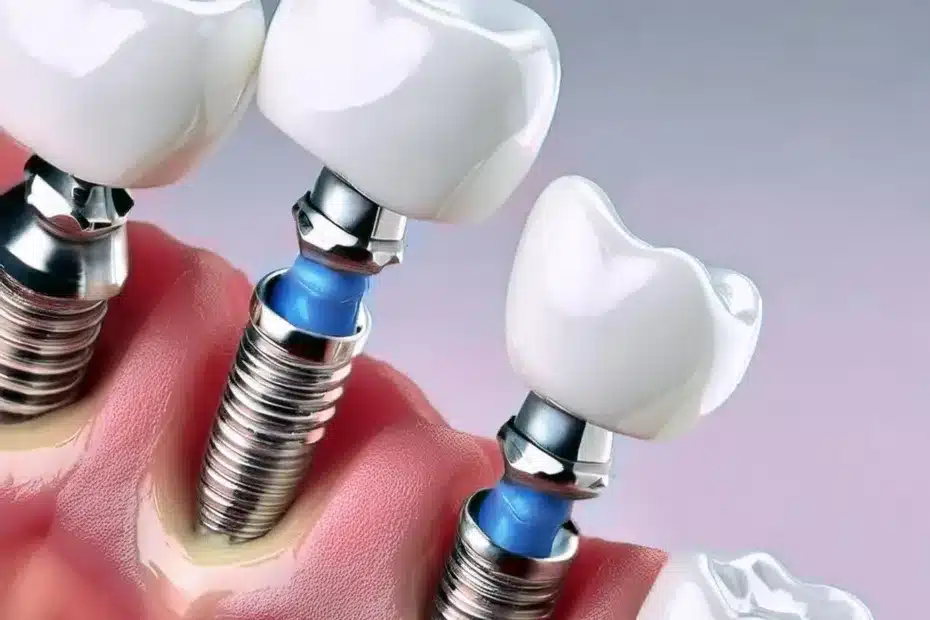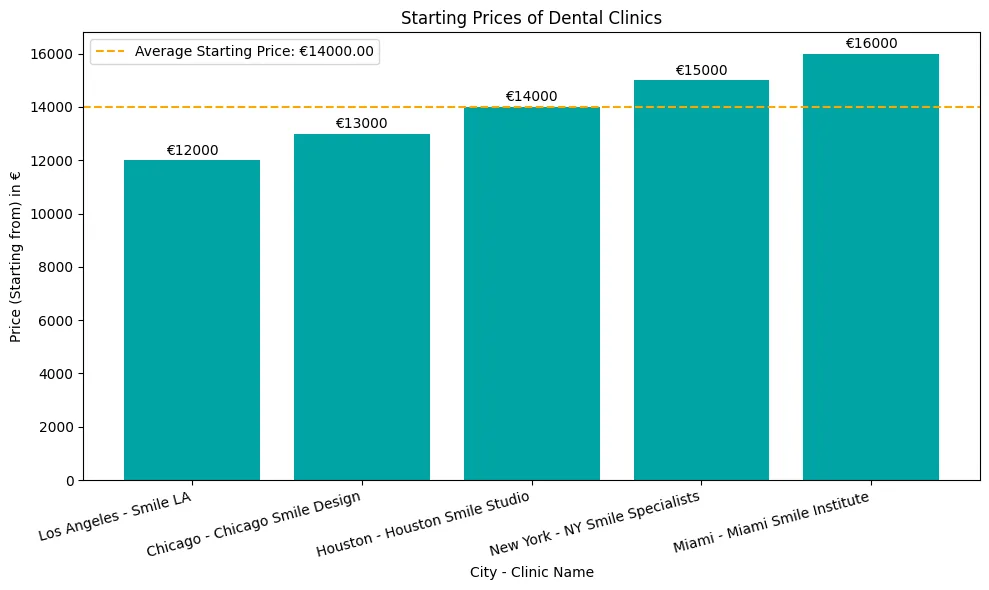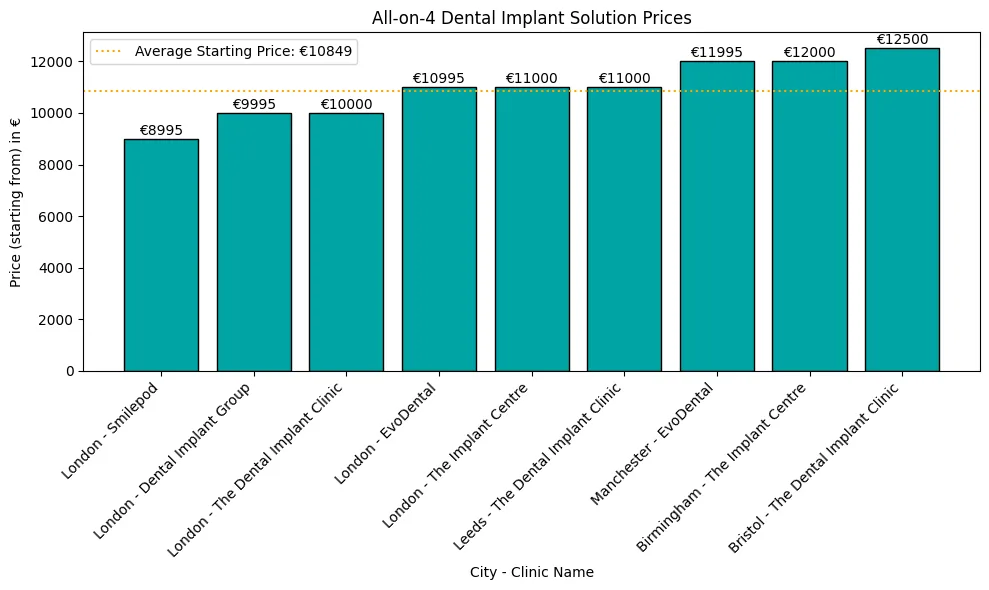Pas implant dentar Pas operacionit, shumë pacientë janë të shqetësuar për rikuperimin dhe si të sigurojnë suksesin afatgjatë të implanteve.
Njohja e kujdesit të menjëhershëm pas operacionit dhe afatit kohor të osteointegrimit është çelësi për një shërim të qetë dhe pa komplikime.
Çfarë ndodh pas operacionit të implantit dentar?
Pas operacionit të implantit dentar, mund të ketë gjakderdhje, ënjtje dhe shqetësim për disa ditë. Hani ushqime të buta, shmangni aktivitetin e rëndë dhe ndiqni udhëzimet e dentistit tuaj. Shumica mund të rifillojnë aktivitetet normale brenda 3 ditëve. Hapat kryesorë të rimëkëmbjes përfshijnë:
Ruajtja e higjenës së mirë orale
Ngrënia e ushqimeve të buta
Marrja e barnave të përshkruara
Shmangia e aktiviteteve të vështira për 24 orë
Pjesëmarrja në takimet pasuese

Procesi i rikuperimit dhe afati kohor
Kujdesi i menjëhershëm pas operacionit dhe udhëzimet pas operacionit
Pas operacionit të implantit dentar, 24 orët e para janë kritike.
Pacientët duhet:
Pushoni: Mos bëni asgjë të mundimshme për të lejuar që trupi të shërohet.
Shmangni zhvendosjen e mpiksjes së gjakut: Përmbahuni nga pështyrja, pirja e duhanit dhe shpëlarja e fortë për të siguruar që mpiksja e gjakut të mbetet e paprekur dhe të parandaloni gjakderdhjen.
Menaxhoni shqetësimin: Përdorni medikamente kundër dhimbjes siç përshkruhet për të menaxhuar shqetësimin dhe aplikoni pako të ftohta për të reduktuar ënjtjen.
Higjiena orale: Shpëlajeni gojën me ujë të kripur për ta mbajtur zonën të pastër pa e shqetësuar vendin e implantit.
Ndryshimet në dietë: Hani ushqime të buta dhe jo pije të nxehta për të shmangur acarimin.
Këto hapa të parë janë çelësi për minimizimin e komplikimeve dhe shërimin.

Rimëkëmbja afatshkurtër (ditët e para)
Në ditët pas operacionit, pacientët duhet të monitorojnë:
Ënjtje dhe mavijosje: Kjo është normale dhe duhet të largohet. Nëse përkeqësohet, shihni dentistin tuaj.
Kujdesi oral: Furçoni butësisht rreth zonës së implantit.
Ndiqni: Merrni pjesë në takimet tuaja të planifikuara për t'u siguruar që implanti po integrohet siç duhet.
Hulumtimet tregojnë se pirja e duhanit dhe higjiena e dobët orale mund të çojnë në komplikime si humbja margjinale e kockave (2). Pra, mos pirja e duhanit dhe kujdesi i mirë oral janë thelbësore.
Shërimi dhe shërimi afatgjatë
Rikuperimi afatgjatë ka të bëjë me procesin e osseointegrimit, i cili zgjat 3-6 muaj.
Integrimi i kockave: Implantet hidroksiapatite të veshura me nano tregojnë kontakt dhe stabilitet më të mirë kockor-implant (4).
Ndryshimet e stilit të jetesës: Shmangni zakonet që mund të komprometojnë shërimin, si pirja e duhanit ose konsumimi i tepërt i alkoolit.
Kontrolle të rregullta: Vazhdoni me vizitat dentare për të monitoruar implantin dhe për të adresuar çdo problem herët.

Komplikimet e zakonshme dhe si t'i menaxhoni ato
Mukoziti peri-implantar dhe peri-implantiti
Sëmundjet peri-implantare janë të zakonshme pas operacionit të implantit dentar. Ato variojnë nga mukoziti periimplant, i cili është i kthyeshëm, tek periimplantiti, i cili mund të çojë në dështimin e implantit nëse nuk trajtohet.
Prevalenca dhe faktorët e rrezikut: Hulumtimet tregojnë se higjiena e dobët e gojës dhe pirja e duhanit janë faktorët kryesorë të rrezikut (2).
Simptomat: Shikoni për skuqje, ënjtje dhe gjakderdhje rreth implantit.
Strategjitë e Menaxhimit:
Zbulimi i hershëm: Kontrollet e rregullta dentare mund t'i kapin këto probleme herët.
Jo-kirurgjikale: Pastrim profesional dhe praktika të mira të higjienës orale.
Kirurgjike: Në raste të rënda, mund të nevojitet pastrimi kirurgjik dhe transplantimi i kockave.

Infeksioni dhe komplikime të tjera
Infeksioni mund të ndodhë pas operacionit dhe mund të çojë në dështimin e implantit.
Shkaqet: Bakteret e futura gjatë operacionit ose kujdesit të dobët pas operacionit.
Simptomat: Dhimbje të vazhdueshme, ënjtje dhe rrjedhje qelb.
Parandalimi dhe menaxhimi:
Antibiotikët: të përshkruara pas operacionit për të parandaluar infeksionin.
Higjiena: Higjiena e mirë orale është çelësi.
Kujdesi pasues: Ndjekje të rregullta për të monitoruar shenjat e infeksionit.
| Komplikimi | Simptomat | Faktorët e rrezikut | Strategjitë e Menaxhimit |
|---|---|---|---|
| Mukoziti peri-implantar | Skuqje, ënjtje, gjakderdhje rreth implantit | Higjiena e dobët e gojës, pirja e duhanit | Pastrim profesional, praktika të përmirësuara të higjienës orale |
| Peri-implantiti | Dhimbje të vazhdueshme, ënjtje, rrjedhje qelb | Higjiena e dobët e gojës, pirja e duhanit, diabeti | Pastrim kirurgjikal, shartim kockash, antibiotikë |
| Infeksioni | Dhimbje të vazhdueshme, ënjtje, skuqje, rrjedhje qelb | Kujdesi i dobët pas operacionit, futja e baktereve gjatë operacionit | Antibiotikë, pastrim profesional, kujdes pasues |
Këshilla për mirëmbajtjen e suksesshme të implantit
Praktikat e higjienës orale
E duhura mirëmbajtja e implantit dentar përfshin disa praktika thelbësore.
Këtu janë disa gjëra që duhet të bëni:
Larja dhe pastrimi i përditshëm me fill me fill: Përdorni një furçë dhëmbësh të butë dhe pastë dhëmbësh jo gërryes për të pastruar rreth implantet. Përdorni fillin me fill çdo ditë për të hequr pllakat dhe mbeturinat.
Larës antimikrobik i gojës: Përdorni një shpëlarës antimikrobik për të reduktuar ngarkesën bakteriale dhe për të parandaluar sëmundjet peri-implantare.
Pastrim i rregullt profesional: Bëni pastrime çdo 6 muaj për të hequr gurët dhe për të monitoruar implantin.
Hulumtimet tregojnë se higjiena e mirë orale mund të zvogëlojë rrezikun e peri-implantitit, i cili është një shkak kryesor i dështimit të implantit (2).

Takime të rregullta pasuese
Kontrollet e rregullta dentare janë të rëndësishme për të monitoruar implantet dentare.
Frekuenca: Vizitoni dentistin tuaj çdo 3-6 muaj, veçanërisht në vitin e parë pas operacionit.
Vlerësimi: Dentisti do të kontrollojë për shenja infeksioni, humbje kockore dhe gjendjen e përgjithshme të implantit.
Rregullimet: Çdo rregullim i nevojshëm në protezë ose pickim mund të bëhet gjatë këtyre vizitave.
Hulumtimet tregojnë se pacientët që ndjekin rregullisht kanë më pak komplikime dhe norma më të larta të suksesit të implantit (4).
Ndryshimet e stilit të jetesës për sukses afatgjatë
Bëni këto ndryshime në stilin e jetës për të zgjatur jetën e implanteve tuaja dentare:
Lë duhanin: Pirja e duhanit është një faktor rreziku kryesor për dështimin e implantit për shkak të efektit të tij në shërimin dhe integrimin e kockave.
Dietë e shëndetshme: Hani një dietë të ekuilibruar të pasur me kalcium dhe vitaminë D për shëndetin e kockave.
Menaxhimi i stresit: Stresi i lartë mund të çojë në bruksizëm (gërvishtje të dhëmbëve), i cili mund të dëmtojë implantet. Provoni teknika të reduktimit të stresit si meditimi ose joga.

Të Procesi dhe afati kohor i implantit dentar hap pas hapi përfshin disa faza, duke përfshirë vendosjen e implantit, shërimin dhe osseointegrimin, vendosjen e abutmentit dhe montimin e kurorës.
Çdo fazë është kritike për suksesin afatgjatë të implantit.
Procesi fillon me futjen kirurgjikale të shtyllës së implantit në kockën e nofullës, e ndjekur nga një fazë shërimi ku implanti integrohet me kockën.
Pasi shërimi të përfundojë, mbështetësja ngjitet dhe kurora e bërë me porosi vendoset në abutment.
Ky proces siguron që implanti dentar të jetë i qëndrueshëm dhe funksional, duke siguruar një zëvendësim të dhëmbëve me pamje natyrale dhe ndjesi.
Përfundim & Key-Takeaway
Pikat kryesore:
Pas operacionit Kujdesi është kritik për një shërim të qetë.
Takimet pasuese janë të rëndësishme për shëndetin e implanteve.
Ndryshimet e stilit të jetesës si lënia e duhanit dhe një dietë e shëndetshme mbështesin suksesin afatgjatë.
konkluzioni:
Pas operacionit të implantit dentar, njohja e procesit të rimëkëmbjes dhe mënyrave për të arritur sukses afatgjatë është çelësi.
Duke ndjekur udhëzimet pas operacionit, duke praktikuar higjienë të mirë orale dhe duke bërë ndryshimet e nevojshme në stilin e jetës, ju mund të rrisni shanset për një shërim të suksesshëm dhe pa komplikime.

Pyetjet e shpeshta
Referencat
(1) Cho JM, Jo H, Jo HG, et al. Terapia afatgjatë me steroide dhe trajtimi me Denosumab që çojnë në osteonekrozë të nofullës të lidhur me mjekimin peri-implant: një raport rasti. J Dent Implant Res. 2024; 43 (3): 27-32.
(2) Lee HS, Kim TW, Moon IS, et al. Një studim retrospektiv mbi faktorët që lidhen me humbjen margjinale të kockave të implanteve të shkurtra të vendosura në rajonet e pasme. J Dent Implant Res. 2023; 42 (3): 46-52.
(3) Park IS, Kim YK, Kim JC, et al. Implantim i menjëhershëm nëpërmjet një qasjeje minimalisht invazive në periodontitin agresiv të maksillës së pasme duke përdorur raportet e rasteve të implantit MagiCore-3. J Dent Implant Res. 2023; 42 (3): 35-45.
(4) Amin OA, Shehata IM, Kamel HM, et al. Vlerësimi i qëndrueshmërisë së implanteve hidroksiapatite të veshura me nano të ngarkuara herët në maksillën e pasme. J Dent Implant Res. 2024; 43 (1): 1-8.
(5) Barber D, Beals D, Francis J, et al. Obliterimi dhe shartimi i kanalit nazopalatin për vendosjen e implantit. J Dent Implant Res. 2024; 43 (2): 19-25.
Neni: Obliterimi dhe shartimi i kanalit nazopalatin për vendosjen e implantit




